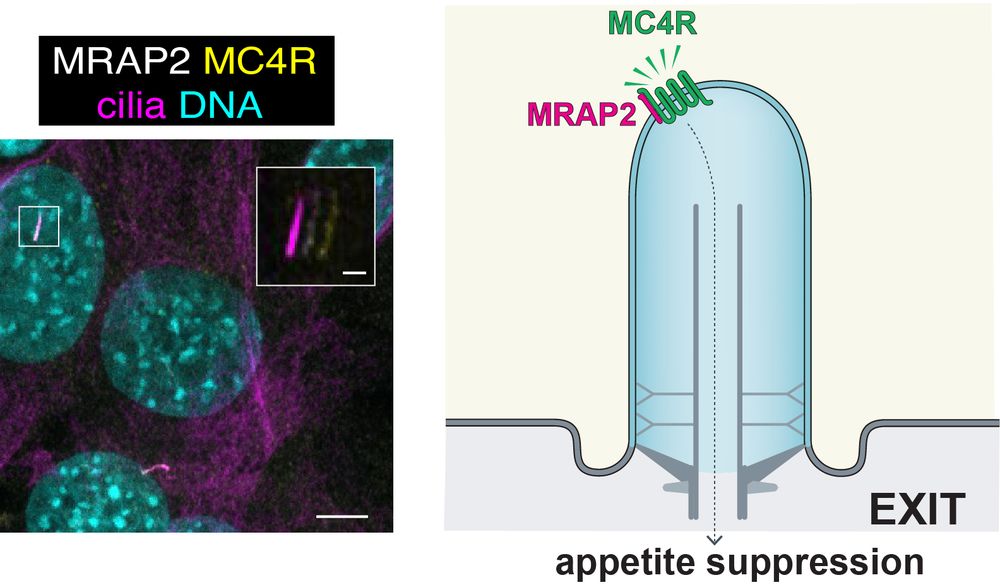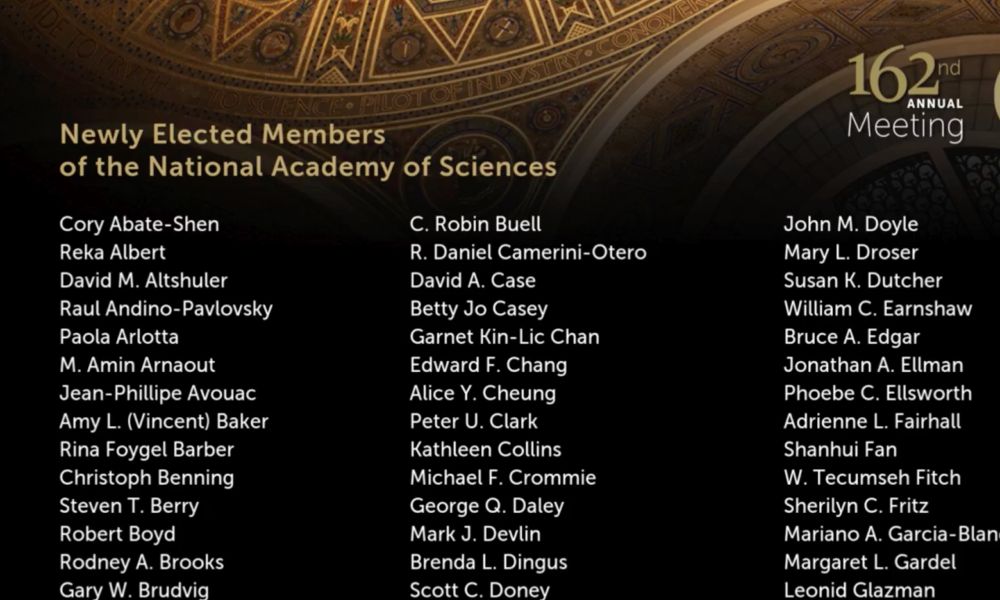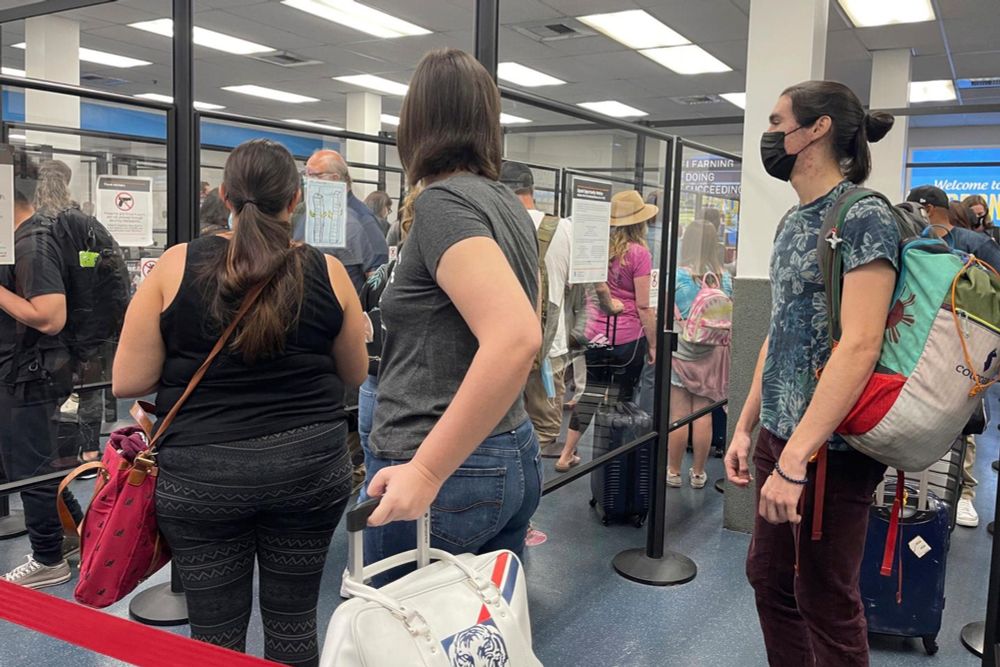Maxence Nachury
@nachury.bsky.social
260 followers
110 following
32 posts
We study cilia, with a focus on trafficking of signaling molecules and ciliopathies. #cilia
nachurylab.ucsf.edu
Posts
Media
Videos
Starter Packs
Pinned
Reposted by Maxence Nachury
Reposted by Maxence Nachury
Sven Lange
@sven-m-lange.bsky.social
· Apr 29

A conserved mechanism for the retrieval of polyubiquitinated proteins from cilia
The temporospatial distribution of proteins within cilia is regulated by intraflagellar transport (IFT), wherein molecular trains shuttle between the cell body and cilium. Defects in this process impair various signal-transduction pathways and cause ciliopathies. Although K63-linked ubiquitination appears to trigger protein export from cilia, the mechanisms coupling polyubiquitinated proteins to IFT remain unclear. Using a multidisciplinary approach, we demonstrate that a complex of CFAP36, a conserved ciliary protein of previously unknown function, and ARL3, a GTPase involved in ciliary import, binds polyubiquitinated proteins and links them to retrograde IFT trains. CFAP36 uses a coincidence detection mechanism to simultaneously bind two IFT subunits accessible only in retrograde trains. Depleting CFAP36 accumulates K63-linked ubiquitin in cilia and disrupts Hedgehog signaling, a pathway reliant on the retrieval of ubiquitinated receptors. These findings advance our understanding of ubiquitin-mediated protein transport and ciliary homeostasis, and demonstrate how structural changes in IFT trains achieve cargo selectivity. ### Competing Interest Statement The authors have declared no competing interest. Sara Elizabeth O'Brien Trust Postdoctoral Fellowship awarded through the Charles A. King Trust Postdoctoral Research Fellowship Program, , 8460873-01 Richard and Susan Smith Family Foundation, https://ror.org/05j95n956, National Institute of General Medical Sciences (NIGMS), , R01GM141109, R01GM143183
www.biorxiv.org
Reposted by Maxence Nachury
Reposted by Maxence Nachury
Reposted by Maxence Nachury
Maxence Nachury
@nachury.bsky.social
· Apr 22
Reposted by Maxence Nachury
Reposted by Maxence Nachury
Cell Biology J-Club
@cellclub.bsky.social
· Apr 20

A hollow TFG condensate spatially compartmentalizes the early secretory pathway - Nature Communications
The authors show that protein TFG self-organizes to form a hollow sphere that helps to guide and spatially organize bidirectional transport at a critical junction between the ER and Golgi in the early...
www.nature.com
Reposted by Maxence Nachury
Maxence Nachury
@nachury.bsky.social
· Mar 28
Reposted by Maxence Nachury
Reposted by Maxence Nachury
Maxence Nachury
@nachury.bsky.social
· Mar 6

Tonic ubiquitination of the central body weight regulator melanocortin receptor 4 (MC4R) promotes its constitutive exit from cilia
The melanocortin receptor 4 (MC4R) regulates body weight homeostasis at the cilium of hypothalamic neurons, but its levels are very low under unrestricted feeding conditions. Here, the authors find th...
doi.org
Maxence Nachury
@nachury.bsky.social
· Mar 6

Subcellular localization of MC4R with ADCY3 at neuronal primary cilia underlies a common pathway for genetic predisposition to obesity - Nature Genetics
MC4R colocalizes with ADCY3 at primary cilia in hypothalamic neurons, and MC4R mutations associated with human obesity impair this localization. Inhibition of adenylyl cyclase signaling at primary cil...
doi.org
Maxence Nachury
@nachury.bsky.social
· Mar 6

Rab35 controls cilium length, function and membrane composition | EMBO reports
image image Rab35 at the mammalian and zebrafish cilium regulates cilium length and left‐right asymmetry, and controls the ciliary levels of PI(4,5)P2 and regulators of the Sonic hedgehog pathway. Rab35 GTPase localizes to the ciliary ...
doi.org
Maxence Nachury
@nachury.bsky.social
· Mar 6
Reposted by Maxence Nachury
Jeremy Berg
@jeremymberg.bsky.social
· Mar 5
Reposted by Maxence Nachury
Jeremy Berg
@jeremymberg.bsky.social
· Mar 5














